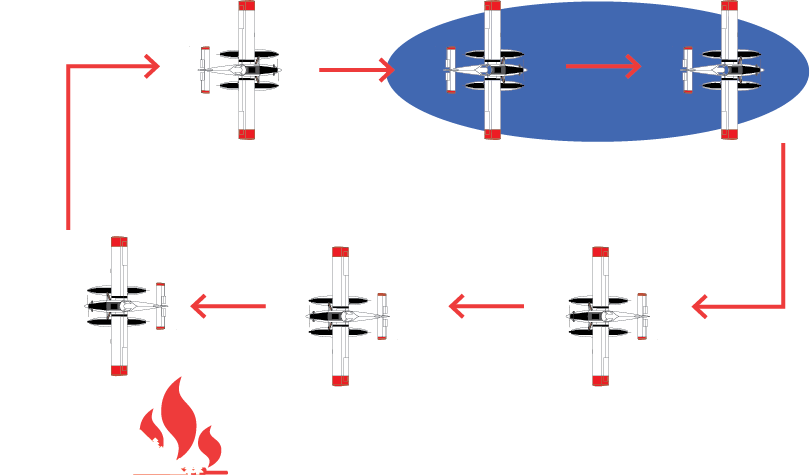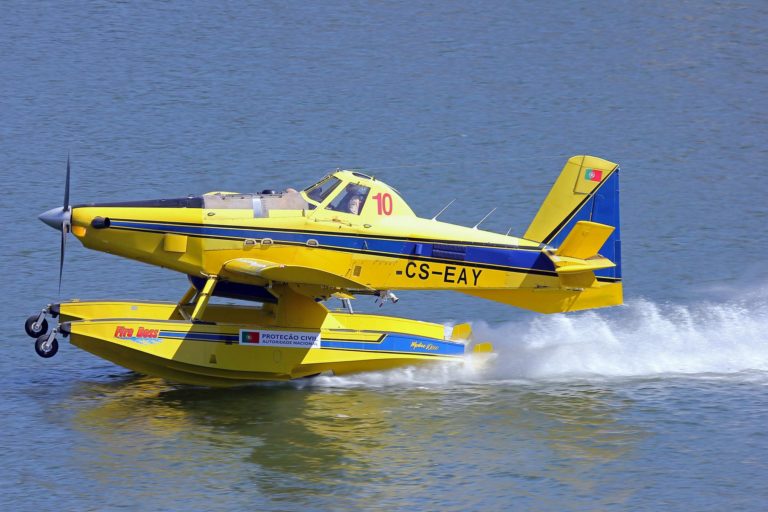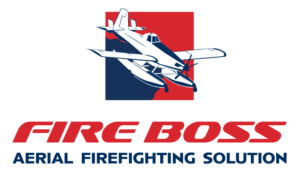Wildfires pit time and nature against fire crews. The Fire Boss® scooping single engine tanker helps you gain the upper hand. That’s because no other air tanker attacks fires with the tempo, agility and effectiveness of the Fire Boss. The advantages don’t stop with performance, the Fire Boss is also the most economical aerial firefighting solution and the fleet is supported by a global Air Tractor network.
Initial Attack Capabilities
Dispatch in as Little as 5 Minutes
150 Knots Ferry Speed
Pre-Position in Remote Locations
Reliable PT6A-67F Turbine Engine
- Dispatch in as little as 5 minutes when on alert
- 150 knots ferry speed gets the Fire Boss on site quickly
- Pre-load with water and retardant at base before dispatch and then stay on site scooping from available water sources
- The superior reliability of the PT6A-67F turbine engine means it’s ready to fly when you are
- Pre-position in remote areas with minimal infrastructure. A gravel runway (or waterside ramp) and fuel are all it needs
Stay and Fight
Scoop 820 Gallons in Just 15 Seconds
Up To 14,000 Gallons per Hour
Sustained Attack for 3+ Hours
Ideal in Fleets
- Arrive pre-loaded with retardant then stay on site scooping water from rivers, lakes and bays
- 3+ hours sustained attack and loiter time before refueling
- Deliver up to 14,000 gallons per hour when water source is close to fire
- Scooping run loads up to 820 gallons of water in just 15 seconds
- The two-seat Fire Boss outfitted with an observer station can remain on-site to direct firefighting activities while also engaging in scooping operations
- Does not require a big airport or an extensive infrastructure to keep it flying and fighting
- Maximize effectiveness by operating in fleets to continually hit the target
Right on Target
Low Drop Speed of 105 Knots for Accuracy
excels in mountainous & Urban interface areas
computer controlled precision fire-gate
Closely support ground crews
- Excels in mountainous terrain and wildland-urban interface areas
- Fast ferry speed (150 knots), low drop speeds (105 knots) and impressive turn and climb rates
- 892 ft/min climb rate at full capacity allows operators to quickly climb to high mountain elevations and execute aggressive down-slope drops
- Perform string drops, salvos, split-loads and control drop rate with the computer controller Fire Retardant Dispersal System (FRDS)
- Precision fire gate allows for safely dropping close to working ground crews, structures, and other fire equipment
The Fleet Advantage
Increased Water Delivery Rates
REduced Costs
Accurate and Fast Delivery
Coordinate With Other Assets
- Operate in a circuit to ensure continuos coverage of target area
- Reduced time between salvos keeps the fire down
- Agile and reliable, the Fire Boss is ideally suited for fleet operations in tight conditions
- Two-seater Fire Boss allows for coordination from the air with the pilot focused on safe operations and director in the back seat on the radio
- Operate an entire fleet of Fire Bosses for less than the cost of one large scooper

The Most Economical Solution
A Fire Boss carries nearly half the payload of a twin turbine engine amphibious air tanker for about 1/10th of the capital and 1/5th of the operating expense. For a cost of less than 65 cents per gallon, the Fire Boss can deliver 20 loads and 14,000 gallons of water on a fire each hour.
Beyond its capabilities as a firefighter, the Fire Boss can be re-fitted with conventional landing gear and a gate box after the fire season ends to perform other types of forestry protection duties, including aerial insecticide application, timber fertilization and post-fire forest rehabilitation, e.g. aerial re-seeding and erosion controlling hydromulch applications.
Sample Mission Profile
The Mission: Deliver 50,000 Gallons to the Fire
| Aircraft | Mission Time | Total Cost |
| 1 Fire Boss | 3.5 Hours | $20,571 |
| 1 Bell 412 | 7 Hours | $23,319 |
| 1 CL-415 | 2 Hours | $66,816 |
| 1 DC-10 | 4.5 Hours | $92,962 |
Feedback From the Front Line
“The first day I flew a Fire Boss I knew it would rewrite the playbook and that I wanted to spend the rest of my career flying one. That was 12 years ago. I was the first pilot in the United States to be carded in a Fire Boss and probably have more time in them than anyone in the world. When dispatched to a fire, I like to win. The Fire Boss has let me be a winner many, many times.”
Jesse Weaver
Director of Operations & Chief PilotDauntless Air – Appleton, Minnesota

Case Study
Lockhyttan Fire in Sweden
In 2018 Sweden faced the hottest July in 250 years. As a result more than fifty large wildfires raged throughout much of Sweden, covering in total 250 km2 (100 square miles)
Due to the immensity of the fires, a call for assistance went out via the European Union’s Civil Protection Mechanism. Portugal’s National Authority for Civil Protection (ANPC) loaned two of the Tondela, Portugal based Agro-Montiar Fire Bosses it had on contract.

